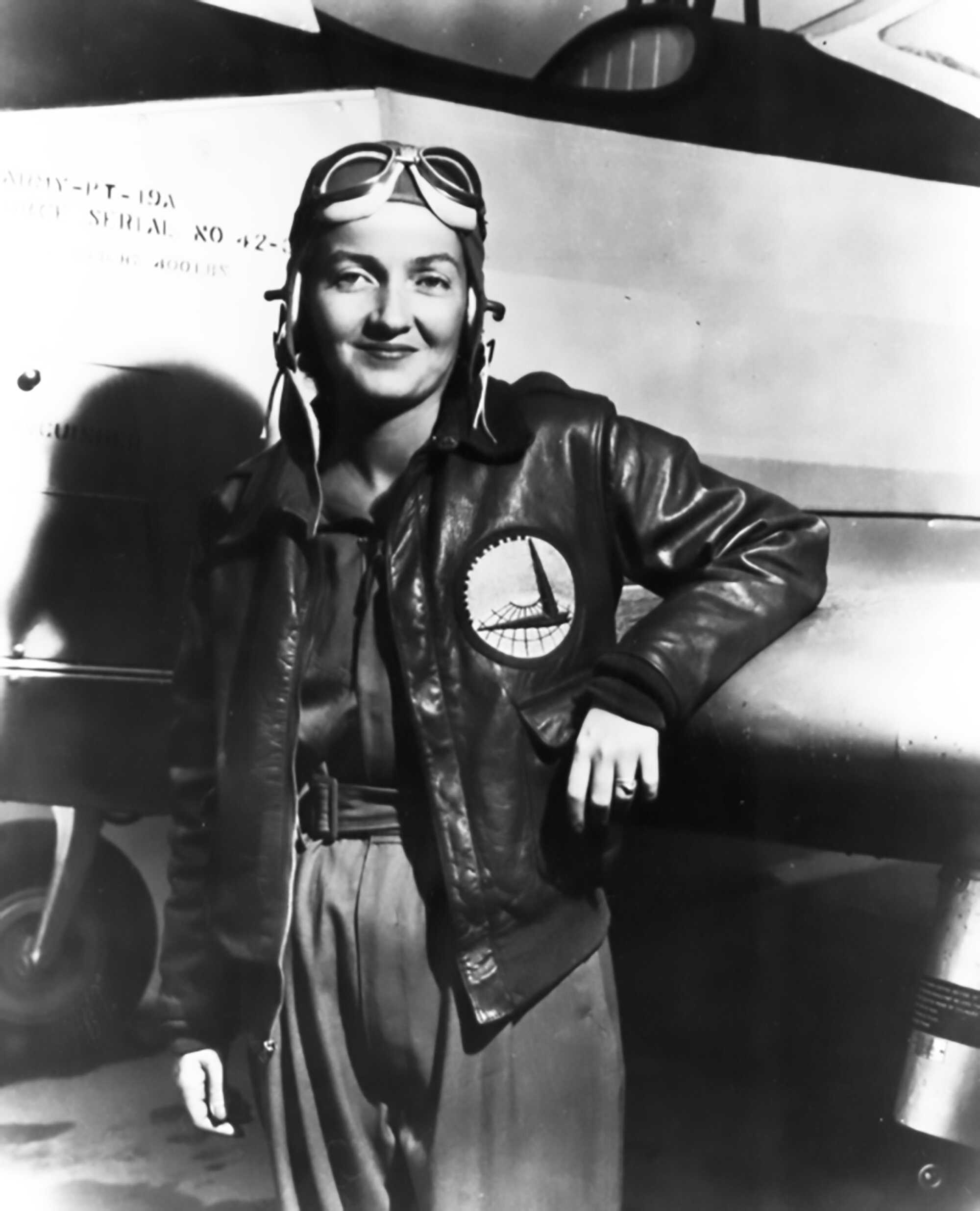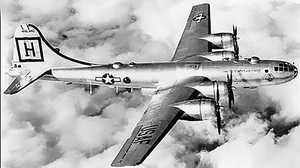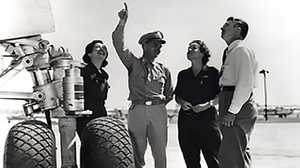Nancy Harkness Love
1914 - 1976

In the mid-1930s a young woman from a prominent Philadelphia family found a job in Boston selling airplanes on commission. Her long list of customers included Joseph Kennedy, Sr., who, according to one account, was more concerned in finding a wife for a future president, his son, than in buying a plane. The young saleswoman, Nancy Harkness, apparently wasn't interested. She had her own marriage in mind, one that would in its own way gain her local celebrity. In 1936, she married an Air Corps Reserves officer called Robert Love. The union was splashed all over the Boston papers -- "BEAUTIFUL AVIATRIX WEDS DASHING AIR CORPS OFFICER" read one headline; "THE ROMANCE OF THE GLAMOROUS YOUNG SOCIETY COUPLE MEETS THE ROMANCE OF THE SKY" announced another. The marriage did more than give Nancy public attention. It placed the already extremely capable pilot in an excellent position to lobby for a women's flying squadron during the war.
Love was the daughter of a wealthy physician; she had been flying since she was a teenager. Though she went to all the right schools, including Milton Academy in Massachusetts and Vassar in New York, she was restless and adventurous. In college she earned extra money taking students for rides in a plane she rented from a nearby airport. Once she flew so low over campus, almost brushing the treetops, that someone was able to read the plane's tail number. University officials were not amused. She was suspended from school for two weeks and forbidden to fly for the rest of the semester.
After their marriage, the Loves built a successful Boston-based aviation company for which Nancy was a pilot. She also flew for the Bureau of Air Commerce: In one project she tested three-wheeled landing gear, which subsequently became standard on most planes. In another, she helped mark water towers with town names as a navigational aid for pilots.
Love was not a headline-grabbing pilot like the famous aviator Jackie Cochran, but her qualifications as a pilot meant that her first proposal for a women's flying squadron, though rejected, was taken seriously. In May 1940, just months after the Second World War broke out in Europe, Love wrote to Lieutenant Colonel Robert Olds who was setting up a Ferrying Command within the Army Air Forces. She said she had found 49 excellent women pilots who could help transport planes from factories to bases. "I really think this list is up to handling pretty complicated stuff," she argued. "Most of them have in the neighborhood of a thousand hours or more -- mostly more, and have flown a great many types of ship." General Olds was intrigued. He took the suggestion to General Hap Arnold, who turned it down, though not permanently.
According to one account, a chance comment her husband made proved a decisive factor in resurrecting Nancy's proposal. In the spring of 1942, Robert was called for military duty in Washington as the deputy chief of staff of the American Ferry Command. Nancy got an administrative job in Baltimore, to which she commuted by plane. One day Robert happened to mention his wife's daily flight to work to Colonel William Tunner, who was heading up the domestic wing of the ferrying division. Tunner, who at that very moment was scouring the country for skilled pilots, was amazed. He wanted to know if there were many other women who could fly. Within days, he met with Nancy and asked her to write a proposal for a women's ferrying division. Within months, the 28-year-old Love had become the director of the Women's Auxiliary Ferry Squadron, or WAFS, with 25 experienced female pilots under her command.
From the very beginning, Love and the WAFS had problems getting the media to take them seriously. One of the first newsreel stories showed Love welcoming some of her new recruits. The announcer summed up the story saying: "What will they think of next." "Life" magazine proclaimed that Love was one of the six American women in the public eye who had beautiful legs. The War Department tried to tone down the publicity, urging the press to treat the women pilots with "diplomacy and delicacy." And Love tried to ensure that her pilots did nothing to attract unwarranted attention. She knew that one misstep could turn the tide of public opinion against her whole team. "If the WAFS are to succeed, our personal conduct must be above reproach," she told her recruits. "There cannot be the faintest breath of scandal. Among other things, this means you may not accept rides with male pilots." She went on to explain why. "If a male pilot and a WAF were seen leaving a plane together there would be suspicions that they were playing house in government property."
The following summer, Love was asked to fly an important mission which, if it had proceeded as planned, would have greatly expanded the scope of her operation. The British had asked for the delivery of 100 B-17s in order to fly deep into Europe. Colonel Tunner suggested to Love that she become the first woman pilot to fly a military plane on an intercontinental flight. The day Love and her co-pilot were to set off, General Hap Arnold got word of the mission. Fearing a tremendous backlash if a woman pilot was shot down by enemy fire, he moved immediately to ground the women. As Love started the engine on the B-17 and was about to taxi down the runway, an officer came screeching down the runway in a jeep with an urgent telegram in hand. The message was from Arnold. It read: "CEASE AND DESIST, NO WAFS WILL FLY OUTSIDE THE CONTIGUOUS U.S." Love and her co-pilot shut down their engines. The photographer who was on hand to record the takeoff, took a still of the two women anyway. The picture captures the disappointment of two frustrated aviators trying desperately to smile.
In the summer of 1943 Love's squadron merged with a women's pilot training program that had been set up under Cochran's leadership the previous fall. Cochran was named director of the combined units, which was known as the Women's Airforce Service Pilots, or WASP. Love was put in charge of all WASP ferrying operations. Under her command, female pilots flew almost every military aircraft then in the air. In some instances, they were even asked to demonstrate to the men that a particular plane was safe. According to Colonel Tunner, the women were instrumental in rescuing the tarnished reputation of the high-speed P-39 pursuit plane, which the men had named the "flying coffin." The men, Tunner claimed, were having so many accidents in the ship because they weren't flying it "according to specifications." He ordered a group of female pilots to begin deliveries of the P-39. "They had no trouble, none at all," Tunner noted years later. "And I had no more complaints from the men."
After the war, Love received an Air Medal for her service to the country. She then retreated from public life and raised three daughters. The family moved to Martha's Vineyard, where they frequently hosted WASPs who had been under Love's command. Love died of cancer at the age of 62 in 1976, so she didn't live to see the WASPs being accorded military recognition three years later. But right up to her death, the women she had commanded remained some of the most important people in her life. Among the things she left behind was a box she had kept for more than 30 years. Inside was a handwritten list she had compiled in 1940 of women pilots. It also contained clippings and photographs of each of the women who had died under her command.







